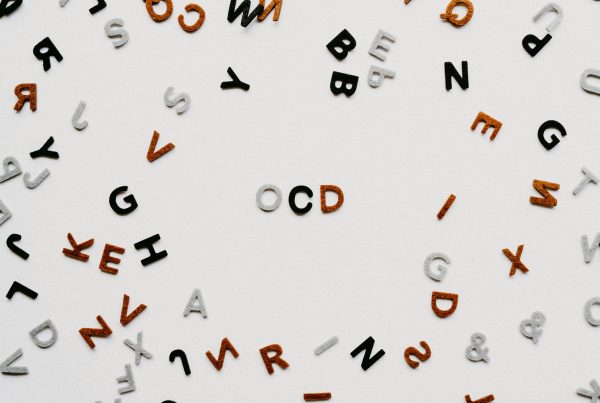With the modern day rise in mental health awareness, most people have a general understanding of what depression is. Persistent feelings of sadness, hopelessness, anger, along with sleep disturbances, changes in appetite, and suicidal ideation are just a few of widely-known characteristics of depression. A lesser understood feature of depression is the various forms of the disorder and their degrees of intensity.
What the average person thinks of as depression is typically major depressive disorder (MDD). MDD is clinically recognized as the most severe and most common form of depression, affecting over 17 million American adults and nearly 2 million American children each year. Although it is the most widely-recognized form of depression, the DSM-5 recognizes a total of five disorders in its depressive disorders class. They are:
- Disruptive Mood Dysregulation Disorder: childhood condition of extreme irritability, anger, and frequent, intense temper outbursts (only diagnosed in those 18 years old or younger)
- Major Depressive Disorder (MDD): persistently depressed mood of loss of interest in activities, causing significant impairment in daily life
- Persistent Depressive Disorder (dysthymia): chronic depression (explain further below)
- Premenstrual Dysphoric Disorder: severe form of premenstrual syndrome (PMS) that usually includes physical, emotional, and behavioral symptoms that typically resolve with the onset of menstruation
- Depressive Disorder due to another medical condition: depression that is inherently attributed to the challenges faced in struggling with a medical condition, such as hypothyroidism, brain injury, Huntington’s disease, and much more
Additionally, DSM-5-recognized depressive disorders can be further classified by the depression’s distinct characteristics, such as peripartum onset, seasonal pattern, melancholic features, mood-congruent or mood-incongruent psychotic features, anxious distress, and catatonia.
While multiple categories and subcategories for depressive disorders exist, there are general features that unify the depressive disorders as a class. As described previously, common features of depressive disorders include sad, apathetic, or irritable mood, accompanied by physiological and cognitive changes that negatively impact an individual’s ability to function in day-to-day activities. The key distinguishing features of the DSM-5-recognized depressive disorders is their timing, duration, and consistency of symptoms.
What is high-functioning depression?
Now, with a basic understanding of the major types of depression we can begin to discuss the term “high-functioning depression.” To start, high-functioning depression is not a clinical diagnosis, but rather, a term that refers to a form of depression in which the affected individual demonstrates little to no outward debilitation from their depressive symptoms. Because the affected individual remains capable of engaging in their regular day-to-day activities, the clinical diagnosis most associated with high-functioning depression is persistent depressive disorder (PDD), which was previously called dysthymia (DSM-4). Persistent depressive disorder (dysthymia) is commonly described as a less severe form of major depression as it is not disabling, however, individuals with PDD may still experience moderately to severely depressed moods. There is extensive overlap between major depressive disorder and persistent depressive disorder, particularly in symptomatology. The defining feature of PDD is that it is the only depressive disorder in which affected individuals experience depressive symptoms for at least two years – and often longer – unlike episodes of major depression which tend to recede in 6-12 months.
What does high-functioning depression look like?
While those with MDD tend to cycle through episodes of major depression and episodes of feeling symptom-free for some time, those with PDD experience continuous depressive symptoms for years. From an outsider’s perspective, those with PDD may not appear to struggle with depression of any form as they are often able to still do things like make work deadlines, maintain relationships, manage most external responsibilities, and even seemingly enjoy themselves at social events. However, perhaps because of the duration of their struggle, those with PDD are often skilled at masking their internal emotional state. Those with PDD continue to struggle with chronic feelings of apathy, hopelessness, and a lack of motivation, but they maintain the ability to behave in a manner that does not raise any cause for concern in others. Unfortunately, the paradox plaguing those with PDD is that behaving in a seemingly normal, healthy manner most often contributes to their feelings of hopelessness and dissatisfaction, as it is morally, mentally, and physically draining to continuously present yourself inauthentically.
There are two primary reasons PDD is particularly difficult to diagnose. First, it is often difficult for the person affected with PDD to detect it in themselves. In those with MDD, a depressive episode typically presents as a significant deviation from their normal behavior, demeanor, and perspective – thus making it more noticeable. However, in those with PDD, their prolonged experience with various depressive symptoms, and varying degrees of those symptoms, often make their continuous depressive episodes indetectable because their behavior, demeanor, and perspective can be mistaken as simple aspects of their personality. Second, overtime, about 75% of those with PDD experience worsening symptoms until they eventually develop major depressive disorder as well. This coexistence of MDD and PDD in an individual is referred to as double depression, and studies have shown that those with double depression report higher levels of hopelessness and dissatisfaction than those with MDD or PDD alone. In those with double depression, once their major depressive episodes end, they typically return to their PDD-like symptoms, rather than feeling symptom-free.
Statistics
Perhaps because of its large symptomologic overlap with major depression, relatively little research on PDD has been conducted in comparison to MDD. Still, some headway has been made in learning more about the prevalence, nature, and effects of PDD. Here are just a few noteworthy findings:
- Of the 7.1% of American adults diagnosed with depression, approximately 1.5% experience PDD each year
- Approximately 2.5% of American adults experience PDD at some point in their lives
- Multiple studies have found higher prevalence of PDD in females than in males (nearly double)
- Adults experience symptoms of PDD for an average of five years, while children (18 years old or younger) typically experience two year periods of PDD symptoms
- An estimated 49.7% of people with PDD reported experiencing severe impairment, 32.1% reported moderate impairment, and 18.2% reported mild impairment
- Of those with PDD, only about 61% will receive clinical treatment
- Common psychiatric and behavioral comorbidities of PDD include: major depression (75%), anxiety disorders (50%), personality disorders (30%), and substance use disorders (50%)
- Adults with a depressive disorder have a 64% greater risk of developing coronary artery disease
Symptoms
As previously mentioned, the symptoms of PDD largely resemble those of MDD. In fact, PDD is commonly described as chronic MDD. Below are a few of the most common depressive symptoms experienced with PDD. Note: because those PDD experience prolonged, continuous low-level depression, the symptoms they experience may change over time and/or fluctuate in severity.
- Recurrent or continuous feelings of hopelessness, apathy, cynicism, or dissatisfaction
- Chronic low energy
- Persistent feelings of guilt or shame
- Incessant feelings of self-doubt
- Extreme lack of motivation
- Decreased productivity
- Difficulty working effectively
- Changes in appetite and/or eating habits
- Sleep disturbances
- Trouble concentrating
- Indecisiveness
Diagnostic Criteria
Until the publishing of the DSM-5, persistent depressive disorder (PDD) was referred to as dysthymic disorder (dysthymia), which was classified as a mood disorder by the DSM-4. Now, PDD is classified as a depressive disorder by the DSM-5. According to the DSM-5, in order for an individual to be diagnosed with PDD, they must:
- Experience a depressed mood for most of the day, for more days than not, for at least 2 years (one year in children)
- Present with two or more of the following:
- Poor appetite or overeating
- Insomnia or hypersomnia
iii. Low energy or fatigue
- Low self-esteem
- Poor concentration or difficulty making decisions
- Feelings of hopelessness
- Not have gone without depressive symptoms for more than 2 months at a time during the 2 year period of disturbance
- Criteria for MDD may be continuously present for 2 years, in which case patients should be given comorbid diagnoses of PDD and MDD
- There has never been a manic episodes, a mixed episode, or a hypomanic episode, and criteria for cyclothymia have never been met
- The symptoms are not better explained by a psychotic disorder
- The disturbance is not due to the direct physiological effects of a substance or medical condition
- The symptoms cause clinically significant distress or impairment in important areas of functioning
Treatment
Although those suffering from PDD are not outwardly debilitated, professionally treatment for the disorder is imperative as it can have serious, lasting consequences. In terms of lower-stake consequences, it may prevent affected individuals from reaching their full potential academically, professionally, or personally, and often significantly impairs their ability to experience true joy and fulfillment in their achievements and daily life. As noted in earlier, a higher-stake consequence of PDD is that individuals with depressive disorders are 64% more likely to develop coronary artery disease, among several other medical conditions.
The most common and effective forms of therapy for the treatment of PDD, include psychotherapy and medication. Cognitive-behavioral therapy (CBT) is typically used in psychotherapy to identify problem areas, learn about various coping mechanisms, practice a more positive mindset, and reinforce behavioral strategies that support your continued healing. In pharmaceutical treatment of PDD, antidepressants are typically the class of medication used. Oftentimes, pharmaceutical treatment is used in conjunction with psychotherapy as medication may help the affected individual enter a state of mind that is more conducive to benefiting from psychotherapy.







